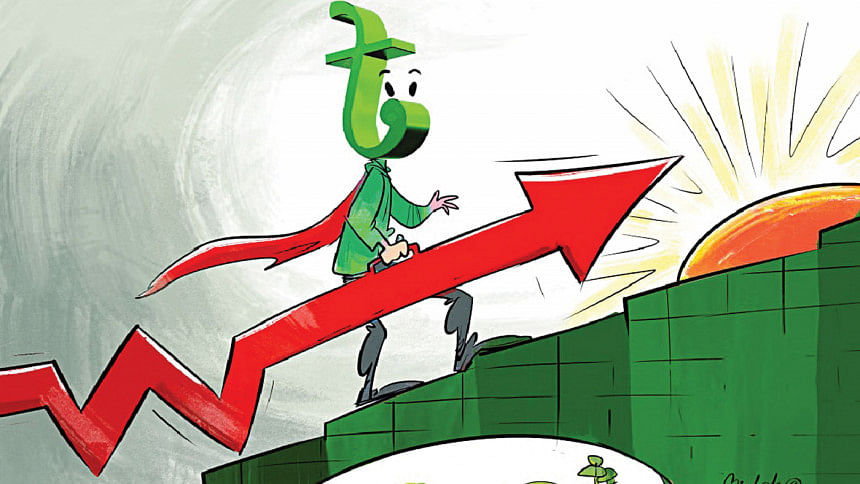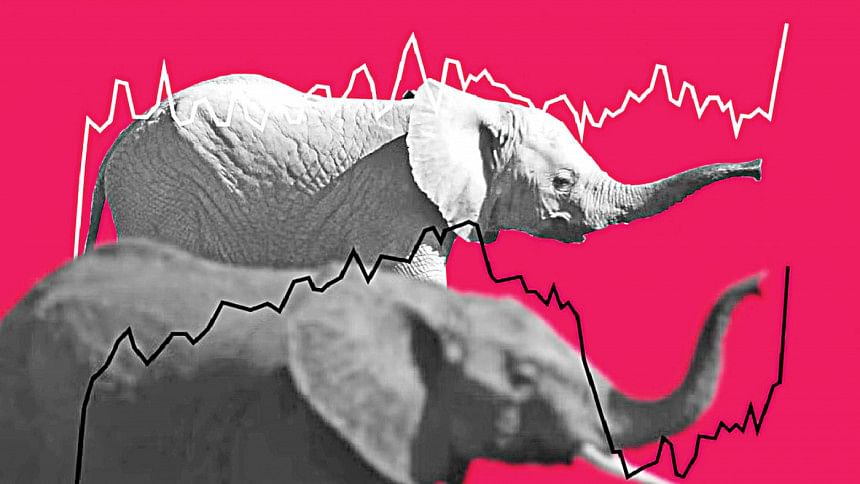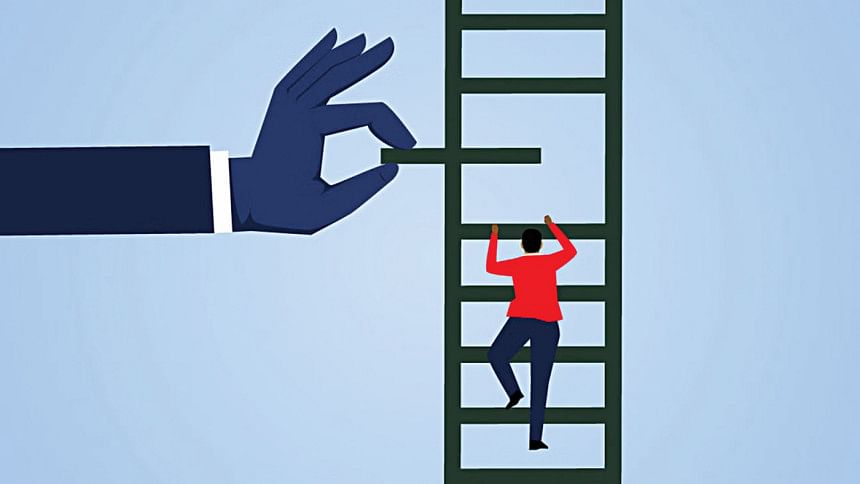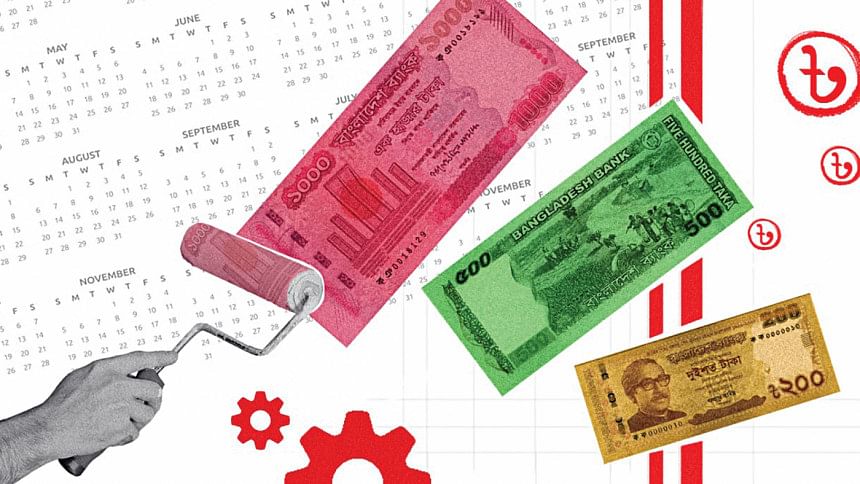Decoding the social dynamics of Bangladesh’s rising middle-class

Bangladesh is rapidly reaching a tipping point, where the country's middle-class will expand dramatically over the next several years. At present, more than a fifth or about 34 million of the country's total population belong to the middle-class category (defined as having per capita income ranging between $2 to $3 per day). This share is likely to reach 25 percent by 2025 and 33 percent by 2030. This means that the size of the country's middle class is likely to increase to around 44 million and 60 million in 2025 and 2030, respectively.
For a lower middle-income country like Bangladesh, one must also realise that the size of the middle-class alone is not what matters the most for economic growth and development. In addition to its demographic size, other dimensions of the distribution of income within the middle-class reflecting the internal heterogeneity and asymmetry of this income group are also important determinants of income growth across time and space. Empirical analysis shows that a "wealthier" middle-class is what positively impacts economic growth the most.
Given the low share of "wealthier" middle-class in Bangladesh, upward mobility between subcategories of the middle-class seems rather difficult. There is also the possibility of downward transition. Besides, an increase of the "floating class" size, which is composed of vulnerable middle-class households that have barely escaped from poverty, has negative impacts on growth. This suggests that, to take full advantage of the dynamics behind the expansion of the middle-class, Bangladesh should design policies that are consistent with the needs of the heterogeneous middle-class households and increase their resilience.
Growth dynamics and middle-class
Analysts identify at least three channels through which the size of the middle-class determines the growth experience of an emerging economy. The first is that the middle-class is where entrepreneurs that foster innovation and growth emerge from. The second highlights middle-class "values" that encourage accumulation of human capital and savings. The third channel emphasises the consumption power of the middle-class that leads to diversification and expansion of markets, which allow for the exploitation of economies of scale in production. In addition, the middle-class may play a key role in better governance. In comparison with the poor, the middle-class may have the ability and power to demand better public service delivery and greater accountability from public officials, and support growth-oriented policies. This suggests that the presence of a strong middle-class in a country should have a significant positive influence on economic growth.
Overall, the expansion of the middle-class is often regarded as a sign of development in a country, resulting in economic prosperity as well as a potential for more social security. Rapid growth of the middle-class clearly has economic consequences; it also has social ones. The middle-class is important for growth as income elasticities of demand of these people are usually greater, especially for durables. Their preference for product differentiation leads to value added in branding. They promote "middle class values" such as hard work, meritocracy, savings, and education. Their impetus to growth is more sustainable than export-led growth. And there is less risk of falling into the "middle income trap". Cross-country empirical evidence shows that a larger middle-class influences consumption growth primarily through higher levels of human capital accumulation.

In Bangladesh, the importance of the middle-class in growth dynamics is likely to occur primarily through its contribution to factor inputs, chiefly human capital. The relationship between the middle-class and the levels of human capital is likely to be robust, positive, and highly significant.
A large middle-class is also likely to be associated with higher levels of savings in the country. The middle-class thus matters for growth in Bangladesh on account of its investments in human capital that is facilitated by steady employment which seems to be a key characteristic of what it means to be middle-class. Thus, a strong middle-class is likely to lead to long-term development of the country by positively affecting the proximate causes of growth. In the process, robust positive impact on consumption growth through schooling will also support increased demand for human capital during the country's industrialisation process.
Specifically targeting the middle-class may help in the fight against poverty, compared with policies that solely aim to help the poor and impoverished. To the extent that the policy-makers would like to nurture the middle-class, the key question is: how should they do so? No doubt, there are many deeply embedded institutional and cultural characteristics that can present difficulties when trying to foster the middle-class. Specifically, existence of strong democratic culture, fair legal traditions, functioning institutions, and good governance can create a rapidly emerging middle-class. In addition, policies to spur the private sector are likely to lead to faster growth of the middle-class. Similarly, policies that promote urbanisation will boost the size of the middle-class. As such, strong evidence exists that a rising middle-class will boost consumption and investment, and be an important driver of economic growth.

The middle-class has growing expectations regarding quality healthcare, good education, social protection, affordable living, and other social services. They no longer remain satisfied with simply having access to public services; they are increasingly concerned with their quality. The middle-class would demand greater access to high-quality, inexpensive education and healthcare. Providing quality services that the middle-class demands is far more complicated than providing access and this can be a source of friction and conflicts. With rapid growth of the middle-class, the demand for public services soars, the capacity of the government to respond to them also expands, but at a slower rate. This, in turn, may have implications on poverty, assuming that the government is able to meet public demands—it is well-known that the causes of poverty include insufficient access to public services such as education and healthcare, especially for rural inhabitants.
Bangladesh's emerging middle-class can thus be a critical factor because of its potential as an engine of growth. History tells us that those belonging to the middle-class vigorously accumulate capital, both physical and human. So, a stable middle-class can provide a solid foundation for economic progress by driving consumption and domestic demand.
The experience of Brazil and South Korea illustrates major differences in the role of the middle-class. In the 1960s, both these countries had similar levels of income and economic growth rates; but by the 1980s, the middle-class made up only 29 percent of the population in Brazil due to high income inequality. In contrast, South Korea's share of middle-class was 53 percent. The high share of the middle-class enabled South Korea to shift away from export driven growth towards domestic consumption, a transition that did not happen in Brazil. And South Korea progressed rapidly afterwards, whereas Brazil stagnated.

Harnessing investment opportunities
Investing in the middle-class in Bangladesh can be an exciting and potentially rewarding venture for investors. The economic opportunities emerge from high growth potential fuelled by various factors, including rapidly rising consumption, infrastructural development, and technological advancements. Investing early in these areas can lead to substantial returns as they mature. Moreover, investing in different lucrative markets provides an opportunity to diversify the investment range which can act as a hedge against potential risks in the investors' overall portfolio.
Moreover, Bangladesh's economy is still in its early stage of development. As the economy progresses, it presents opportunities for investors to expand and reach new, underserved markets. Above all, favourable demographics offer a young and growing population. This demographic trend can translate into increased demand for goods and services, driving further economic expansion and creating investment opportunities in various sectors.
One must also realise that, in the aftermath of the Covid-19 pandemic and adverse global and national developments that have followed afterwards, Bangladesh economy has suffered serious macroeconomic instability which has resulted in high inflation and financial and external volatility over the last two years. This, in combination with other factors, has slowed down economic growth and unemployment is more likely to have risen in the country. The ensuing slow recovery in investment has also cut the pace of structural transformation (from agriculture to higher productivity sectors) in Bangladesh.
Anecdotal evidence shows that productive structural transformation—the shift in employment out of lower productivity sectors into higher productivity ones—has slowed, weakening a key driver of job quality growth that is associated with poverty reduction, falling shares of vulnerable employment and growth of the emerging middle-class in the country. This shows a clear need for improvements in productivity, sustainable structural transformation and expansion of the social protection system to ensure a basic social floor for the poor and vulnerable middle-class of the country.
No doubt, investing in the emerging middle-class dominated Bangladesh economy offers enticing opportunities for growth, but it comes with its fair share of challenges as well. By understanding the potential rewards and risks, conducting thorough research, and maintaining a long-term mindset, investors can harness the growth potential of this dynamic economy. The key will be to invest with caution, along with a well-thought-out strategy to make the most of the emerging opportunities.
Middle-class and social transformation
The middle-class is not only a driver of consumption and domestic demand, its social role is equally important. The middle-class is usually progressive, supports democracy and moderate political platforms. A strong middle-class can, therefore, influence inclusive development through more active participation in the political process, expressing support for inclusive political programmes and electoral platforms.
Although a larger middle-class may imply a happier population—especially for the new entrants—this may also create pressures for better delivery of public services or for more democratic governance as middle-class citizens recognise their potential to bring about positive changes.
However, despite having incomes above the poverty line, some middle-class segments are quite vulnerable. Many of them work in the informal sector, their education and skill levels do not permit them to move up to better occupations, and social protection systems fail to reach these vulnerable groups. Their susceptibility to economic shocks is striking. This vulnerability is especially worrying, since if they have vulnerable incomes and unstable employment, their consumption levels may not support sustainable development and stable social progress.
Usually, the middle-class possesses rising expectations, which follow Hirschman's "tunnel effect". The tunnel effect highlights initial tolerance of increased inequality resulting from uneven economic growth processes on the part of relatively disadvantaged members of society, who, expecting to catch up and benefit in the near future, draw satisfaction from the improved income situation of others. If the moment of catching up does not arrive, initial tolerance may switch, giving way to feelings of falling behind, resulting in social upheaval.
The government's role is to put policies in place to fight the vulnerabilities of the middle-class and benefit from middle-class support. These policies should promote upward social mobility such as quality education, and provide safety nets that protect the vulnerable segments when facing life risks. If high quality of publicly provided services can be ensured, a constituency for comprehensive contribution-based social protection system can be built with support from the middle-class. However, if publicly-provided services are of low quality, the middle-class will perceive themselves as losers in the fiscal bargain and may not be willing to finance the public system.
Inclusive development and middle-class
While the middle-class is highly heterogeneous, its improved economic status could translate into greater ability for the middle-class to engage in public life, exercise their voice, and influence decision-making. However, the key issue is whether this middle-class, if truly empowered, will push for a policy agenda that is well-aligned with the interests of the poor and the vulnerable, disadvantaged and socially excluded communities in Bangladesh.
A larger middle-class is more likely to be associated with more robust democratic institutions, control of corruption, as well as higher public expenditure on education and health. In Bangladesh, the middle-class is promoting increased aggregate demand for higher quality domestic products, in particular processed and diversified food products, thus progressively transforming the economy from a global manufacturing centre (e.g., readymade garments) to a "consumption powerhouse".
A look at the characteristics of the middle-class by measures such as number of children, level of education and incidence of informal employment shows that the middle-class is considerably closer to the poor and near-poor households than to affluent ones in Bangladesh. This resemblance between middle-class and low-income groups could result in support from the former for a range of policies that would also benefit poorer segments of society. Investments in primary and secondary education, universal health coverage and the extension of social protection to the poor and informal workers are all policy areas where the interests of both the middle-class and those belonging to the bottom of the income distribution seem to converge. The question of social protection extension is particularly important, as low level of coverage in Bangladesh threatens large segments of the middle-class to fall back into poverty due to recurrent economic and social volatility.
There are, however, differences between the middle-class and poorer groups in several areas. In particular, participation of the poor households in agriculture is significantly higher than among the middle-class households. Related to this, the difference in urbanisation rates is also high: middle-class individuals are more urban than poorer households. These differences suggest that a number of pro-poor policies, such as investments in rural infrastructure and agriculture and support for small-scale farmers and local food systems, may not get strong support from the middle-class and affluent households. Thus, although a positive association between the growth of the middle-class and a series of positive institutional outcomes is often expected, it is not enough to address rising inequalities to address the specific needs of poorer communities.
People also cite evidence for representatives of the middle-class who are more likely to guard their relative privileges against the incursions of poorer classes than champion alternatives that would help to reduce poverty. The middle-class is often branded as being more concerned with retaining its privileges and remaining loyal to the government that made its social advancement possible than in greater social justice and equality. In fact, the middle-class often helps a regime to maintain the status quo.
Despite these structural limitations of the middle-class, the rising expectations of the expanding middle-class in Bangladesh signal its awakening. The key question is: will this middle-class be the country's agent of change for inclusive development?

 For all latest news, follow The Daily Star's Google News channel.
For all latest news, follow The Daily Star's Google News channel. 



Comments